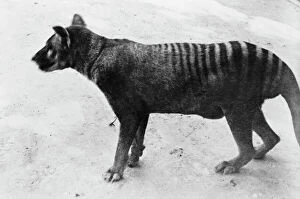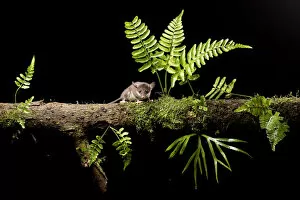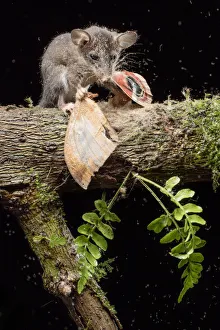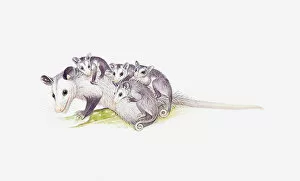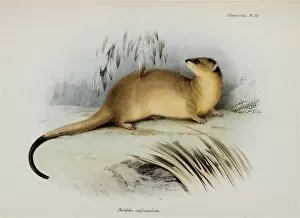Didelphimorphia Collection
Didelphimorphia, also known as opossums, are a diverse group of marsupials found in various regions around the world
All Professionally Made to Order for Quick Shipping
Didelphimorphia, also known as opossums, are a diverse group of marsupials found in various regions around the world. One fascinating member of this order is the Thylacinus cynocephalus, commonly known as the thylacine or Tasmanian tiger. Unfortunately, this unique species became extinct in the early 20th century. In contrast to the thylacine's fate, other didelphimorphias continue to thrive today. Take for instance the Brown four-eyed opossum (Metachirus nudicauda) that emerges from its hiding place at night in the cloud forests of Choco region. Its large eyes provide it with excellent vision even in low light conditions. Another remarkable creature within this order is the Mouse opossum (Marmosops impavidus), which can be spotted perched on a branch in Pinas, El Oro, Ecuador. This tiny marsupial displays impressive agility and balance as it navigates through its arboreal habitat. A juvenile Andean mouse opossum (Marmosops impavidus) captures our attention while feasting on a moth in El Oro, Ecuador. These young individuals demonstrate their resourcefulness and adaptability to survive and grow into adulthood. Similarly, another juvenile Mouse opossum (Marmosops impavidus) demonstrates its feeding skills by devouring a moth amidst lush vegetation in Pinas, El Oro, Ecuador. These small creatures play an essential role in maintaining ecological balance by controlling insect populations. Illustrations depict female Opossums (Didelphimorphia) caring for their young ones with utmost dedication and love. Their maternal instincts ensure that future generations will flourish under their watchful guidance. Oftentimes mistaken for dead due to their incredible defense mechanism is captured beautifully through illustrations showing Opossums playing dead amidst tall grasses. This clever strategy helps them evade predators and survive in their natural habitats.

